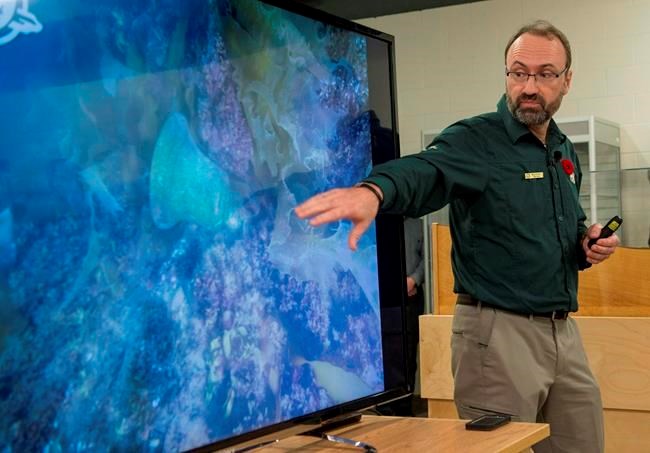OTTAWA — For only the second time in 12 years, Marc-Andre Bernier and his underwater archaeology team at Parks Canada will not be heading north this month to explore the wrecks of the doomed Arctic expedition of Sir John Franklin and his crew.
Bernier said last summer was the team's most successful visit ever, excavating cabins and a steward's pantry on Erebus, and bringing 355 artifacts to the surface for restoration and study. Robot cameras were used to probe inside the HMS Terror for the first time since it was discovered four years ago.
The plan was to return again later this month, when Arctic conditions are normally best for this kind of work, and keep going.
But because of COVID-19, access to the wrecks of HMS Erebus and HMS Terror in waters off King William Island in Nunavut, is closed to all but local Inuit Guardians keeping watch on the sites, and those with harvesting rights in the surrounding waters.
"It is quite disappointing," said Bernier, the manager of underwater archaeology.
The two ships, with 129 men on board, left England in 1845 to pursue the dream of finding and mapping the Northwest Passage. They would never return.
The whereabouts of the ships were a global mystery until 2014, when Parks Canada divers, helped by Inuit guides, located Erebus in 2014, and then Terror two years later, about 100 kilometres further north, in the coincidentally named Terror Bay.
While missing one more year of exploration when the wrecked ships have already lain in their watery graves for more than a century and a half may seem like no big deal, every year that passes brings more risk that some of the secrets contained within may never be revealed.
"We are concerned about Erebus," said Bernier.
That ship, the only one divers have been inside of as yet, is close to the surface, and sometimes if the waves are high enough, the top of the ship is fully exposed. Some years, said Bernier, they return to find extensive damage already done to the ship. Others they come back and nothing has changed at all.
The break, said Bernier, could give them more time to research and begin preservation and restoration work on the objects already recovered. Like a pair of epaulets left in a box under the bed of the cabin belonging to Lt. James Walter Fairholme, and a brush with hairs still in it that can be analyzed for DNA.
But that work too has been delayed by COVID-19.
The archaeology team was sent home in mid-March when most federal buildings were closed. The date of return to their labs is still not known, said Bernier.
The team has been able to use the photos and videos taken on both ships to work on mapping them out. Terror, which is more protected than Erebus because it lies in deeper water, hasn't been mapped fully at all yet, so that work is underway this summer. Diving into the ships takes precision and the maps are needed to do it properly.
Dives to Erebus can last as long as three hours but the deeper, and much colder waters around Terror will limit exploring that ship to about 30 minutes a day, said Bernier.
Bernier said the information gleaned from every object, every trip below the water, helps fill in gaps in the story. Since Fairholme's epaulets were found in his cabin but none of his clothes, Bernier wonders whether he decided they were expendable when he packed to leave the ship forever.
There are other questions. Why were the belongings of a Terror crew member found on Erebus? Did Terror get abandoned first and the remaining men move to Erebus before it too got trapped in the ice and sank?
Bernier said on Erebus, the plates in the pantry were still neatly stacked in their racks, a coffee pot still in it place, pencils and pencil boxes remaining on their shelves.
It suggests the ship was neither abandoned quickly, nor did it sink suddenly, since a sudden influx of water would have caused more damage.
"That's what we have to do now, is try to make things fit," he said. "That will help us understand what happened, what's the timelines."
For the archaeology team, they're just biding their time now until next year when they hope the pandemic is over and they can once again return to the North for the exploration that will make their careers.
"For an archaeologist, this is a once in a lifetime," he said.
This report by The Canadian Press was first published Aug. 16, 2020.
Mia Rabson, The Canadian Press



